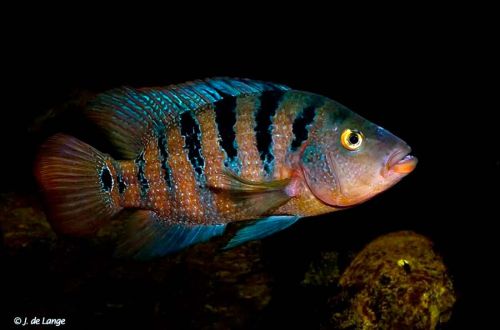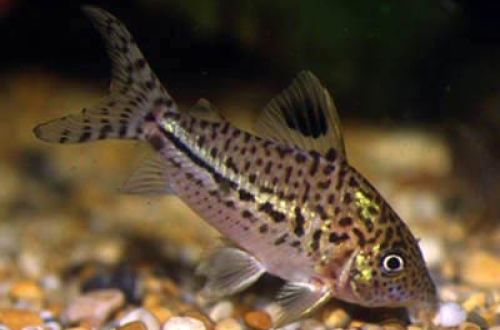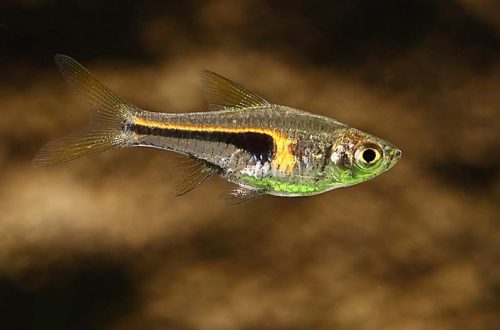
Moharra
Mexican cichlazoma or Mojarra, scientific name Mayaheros urophthalmus, belongs to the Cichlidae (Cichlid) family. Also known as the Maya Cichlid. In the region of habitat (USA, Mexico), it is primarily an object of fishing and commercial fish. Rarely found in aquariums.

Contents
Habitat
As the name implies, the fish comes from Central America. It lives in river systems flowing into the Atlantic Ocean, from Mexico to Nicaragua. Introduced to the southern states of the United States, in particular to Florida.
Inhabits freshwater and brackish mangrove swamps, backwaters of rivers, estuaries. Prefers regions with dense dense vegetation and silty substrates.
Description

Adults reach an average length of up to 20 cm. However, some geographic forms can grow twice as large. The maximum recorded size was over 39 cm.
The fish has a flattened oval body. The fins are large and prickly due to pointed rays. The largest is the dorsal fin, which extends from the middle of the body to the tail.
Depending on the specific region of origin, yellow-brown or gray-brown colors predominate in color, which give way to red shades during the mating season. The red color may also appear at other times, especially on the lower body and fins.
The characteristic body pattern consists of six wide green-black vertical stripes running along the sides of the body. A large black spot is noticeable at the base of the tail.
Behavior and Compatibility
Quiet relatively peaceful fish. Monogamous, as they grow older they form a stable male / female pair, which persists for a long time. Caring parents become aggressive during the breeding season, protecting their offspring. They hunt smaller fish. However, in nature they themselves often become the prey of large predators and birds.
Given their gastronomic preferences, Mojarras pose a threat to small fish, as well as shrimp, snails and other small aquarium inhabitants.
It belongs to the territorial species, which is most pronounced during the mating season, so other bottom fish are not recommended, such as catfish and loaches. A good choice would be fish of a comparable size, living in the water column or near the surface.
Brief information:
- The volume of the aquarium – from 350 liters.
- Temperature – 25-28°C
- Value pH — 7.0–9.5
- Water hardness – medium and high hardness (12-35 dGH)
- Substrate type – any
- Lighting – subdued or moderate
- Brackish water is acceptable
- Water movement – light or moderate
- The size of the fish is up to 20 cm.
- Nutrition – foods high in protein
- Temperament – conditionally peaceful
- Keeping alone or in a formed male/female pair
- Lifespan up to 11 years
Maintenance and care, arrangement of the aquarium
The optimal size of an aquarium for a pair of Mayan cichlids starts from 350-400 liters. Although in nature they live among thickets of aquatic plants, in an artificial environment they can damage and uproot them. In the design, it is desirable to use fast-growing floating species. When decorating, natural driftwood and heaps of stones from which they form places for shelters are welcome.
Hardy and unpretentious, able to survive in a variety of conditions. Perfectly adapted to both fresh and brackish water. Withstand rapid changes in salinity up to the values of sea water. Comfortable water is considered to be neutral or alkaline pH with medium or high hardness.
It is noted that prolonged exposure to soft acidic water provokes bacterial and fungal infections.
In their natural habitat, temperatures range from 18 to 34°C. Thus, there is no need to maintain a strict temperature regime.
Large aquariums should be equipped with a powerful filtration system. If kept in brackish water, some marine aquarium equipment will be required.
Food
Considered a small carnivore. In nature, they feed on other fish and invertebrates (insects, snails, worms). In the process of feeding with food, a small amount of vegetation also enters.
In aquariums, it is recommended to undermine live prey, otherwise malnutrition and exhaustion are often observed. Alternative products should only be used after consultation with the supplier.
Sources: floridamuseum.ufl.edu, Wikipedia, FishBase





